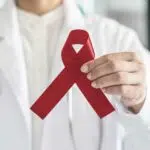Cancer from the Sun Month is observed in June every year. The main goal is to educate and assist individuals in learning about cancer prevention measures, early detection, and also treatment. It also aims to educate people on the importance of avoiding excessive exposure to the sun’s rays. Examining your skin for suspicious changes is another means of detecting cancer early.
History of Cancer from the Sun Month
Squamous Cell Carcinoma (S.C.C.) is among the most common types of skin cancer. It usually affects body regions that suffer damage from the sun’s U.V. rays and tanning beds. Affected regions could include the neck, upper back, head, ears, hands, legs, lips, and ears. This type of cancer progresses slowly. It can affect other parts of the body such as the bones, tissues, and lymph nodes, which is much more difficult to treat. Early detection significantly aids treatment.
If you are a cancer survivor or happen to fall in the high-risk category, get familiar with the symptoms of skin cancer. Ensure you perform monthly skin examinations. Use a mirror to check your scalp, arms, neck, ears, nose, and genital area. Your body inspection should cover every inch of your skin. Give special attention to moles, lumps, and previously affected areas. Report any strange findings to your dermatologist immediately.
The World Health Organization lists cancer as one of the leading causes of death worldwide. There is a membership-based organization based in Geneva that is dedicated to the global fight against cancer and the advancement of medical research. Under its auspices, the first International Cancer Day was held in Geneva, Switzerland. Many well-known organizations, cancer societies, and treatment centers also supported this initiative.
Since there are numerous types of cancer, various colors and symbols are used to identify and promote the fight against them. For example, the orange ribbon is used to raise awareness about cancer in children, whereas the pink ribbon is globally associated with breast cancer.
Cancer from the Sun Month timeline
Rene Theophile Hyacinthe Laënnec, a French physician, distinguishes ‘melanoma’ as a stand-alone disease.
Australian researcher Henry Lancaster, identifies the link between melanoma and latitude, particularly in Australia and New Zealand.
U.V. tanning beds are classified as carcinogenic to humans by the World Health Organization.
A study at Massachusetts General Hospital discovers that combining an immune system-stimulating compound with topical chemotherapy reduces the risk of suffering SCC.
Cancer from the Sun Month FAQs
Is skin cancer caused solely by the sun?
Skin cancer is caused by long-term, indiscriminate sun exposure, but that’s not the only cause. The diagnosis of a melanoma or non-melanoma form of cancer also plays a significant part.
What does skin cancer look like?
S.C.C. sometimes appears as a firm, red swelling or a rough, scaly sore that itches and may even bleed.
How common is sun-related skin cancer?
This exposure can cause skin cancer in one out of every five Americans.
How to Observe Cancer from the Sun Month
Consult a physician
Make an appointment if you notice any changes in your skin that concern you. Change does not always mean a problem.
Put on sunscreen
It's a good idea all year round. Sunscreen doesn’t completely filter out all harmful U.V. rays, particularly those that can cause melanoma, but it plays an important role in overall protection.
Avoid using tanning beds
People who use a tanning bed face an increased risk of melanoma. Furthermore, U.V. rays can cause premature skin aging (wrinkles, loose skin, brown spots) as well as skin cancer.
5 Mind-blowing Facts About Cancer
Target demographic
If you have blonde/red hair and light-colored eyes, and you freckle or sunburn easily, you should take extra precautions.
Reaper
Cancer is the second-highest cause of death in the world.
Higher-ups
Living at higher altitudes, where there is more sunlight, exposes you to more radiation.
Another reason to quit
Smokers are more likely to develop squamous cell skin cancer, particularly on the lips.
It is avoidable
One-third of all commonly occurring cancers are avoidable.
Why Cancer from the Sun Month is Important
It creates awareness
Cancer from the Sun Month aims to create awareness and educate people about the dangers of S.C.C. Information can help improve early detection and save lives.
Start serious conversations
While discussing cancer can be difficult, especially in some societies and environments, doing so publicly can lead to better outcomes at the person, community, and policy levels. Realizing where to go for help and being a part of a larger support network can make us all feel like a part of the answer.
Advocating for early treatment
Common types of carcinomas, such as basal cell and squamous cell carcinomas, are highly curable. In addition, the five-year survival rate for people who detect and treat melanoma before it spreads to the lymph nodes is high.
Cancer from the Sun Month dates
| Year | Date | Day |
|---|---|---|
| 2026 | June 1 | Monday |
| 2027 | June 1 | Tuesday |
| 2028 | June 1 | Thursday |
| 2029 | June 1 | Friday |
| 2030 | June 1 | Saturday |
















































































































